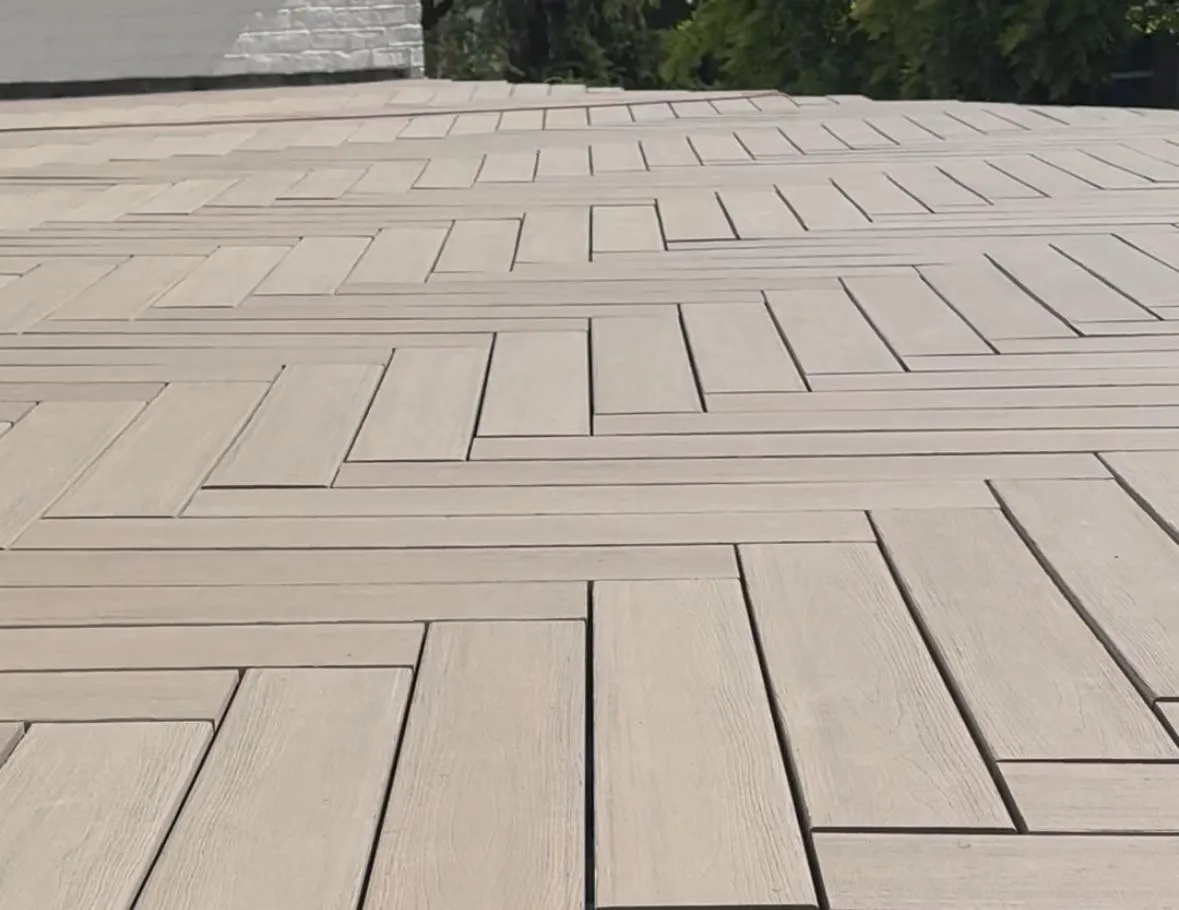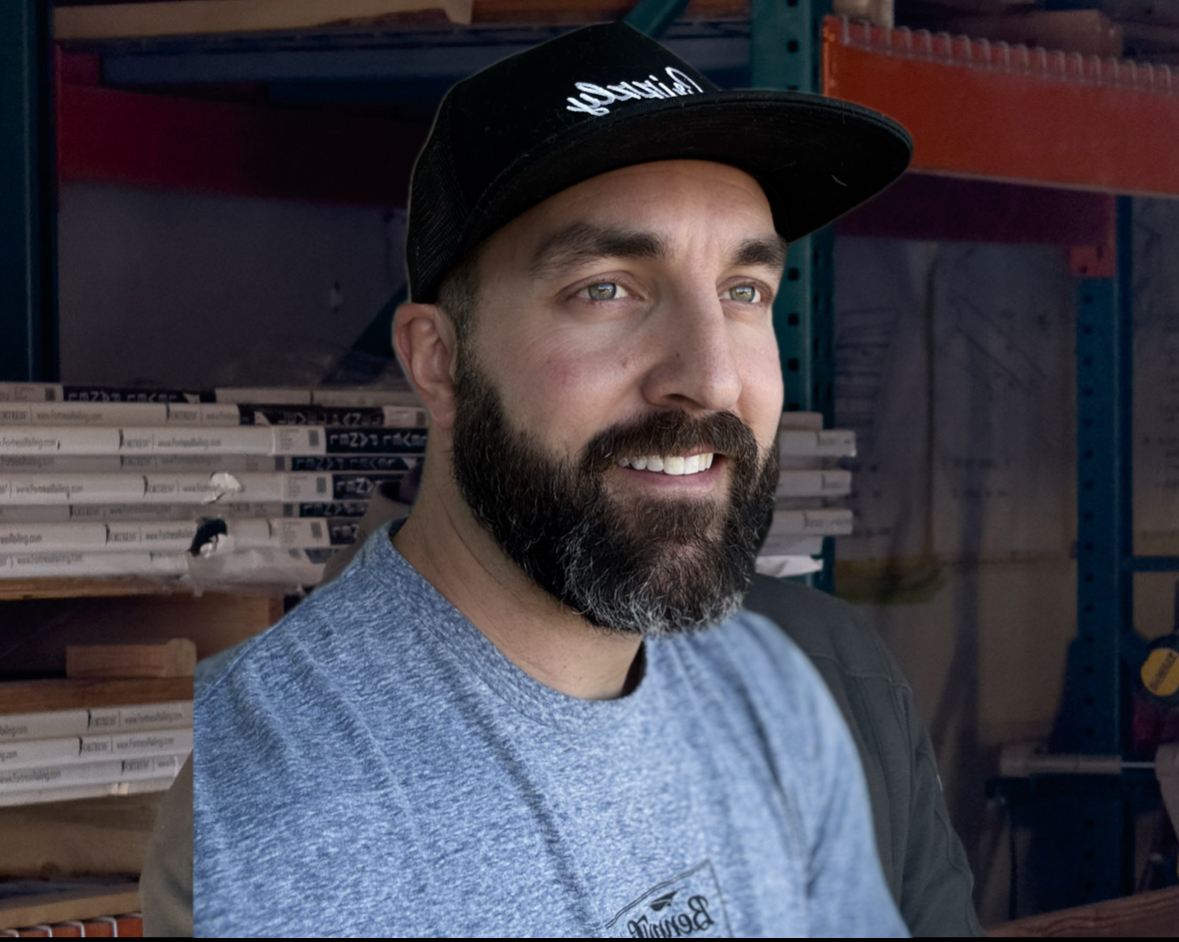
Why Herringbone & Hatch Deck Patterns Are Taking Off in Custom Builds
Why Herringbone & Hatch Deck Patterns Are Taking Off in Custom Builds

In the world of custom outdoor construction, decking has evolved far beyond simple rectangles and parallel boards. Today’s homeowners want more—they want personality, craftsmanship, and wow factor. For contractors looking to stay competitive and deliver high-end results, herringbone and Hatch deck patterns are fast becoming the go-to style in luxury builds.
At Warrior Built, we’ve seen a sharp rise in demand for these geometric decking layouts, and for good reason. These patterns not only deliver aesthetic punch but also showcase a contractor’s craftsmanship and attention to detail. In this guide, we’ll explore why these designs are trending, how to execute them properly, and why offering them can elevate your brand as a custom deck builder in Utah.
What Are Herringbone and Hatch Deck Patterns?
Herringbone
The herringbone deck pattern features boards cut at 45-degree angles and installed in an interlocking “V” formation. The result is a striking zig-zag effect that gives the deck texture, movement, and symmetry.
This pattern creates a high-end, tailored look that works well in both traditional and modern spaces. It’s particularly effective on large decks or in entertainment zones where the design can really shine.
Hatch (commonly called Tile style)
The Hatch pattern is an emerging favorite in Utah’s custom deck market. This design involves alternating vertical and horizontal board layouts inside framed boxes, much like tiles in a grid. It’s architectural, contemporary, and allows for creative board orientation and material blending.
Both patterns break away from the cookie-cutter deck appearance. They transform surfaces into focal points, offering a custom aesthetic that’s clean, intentional, and upscale.

Why Contractors Should Pay Attention to This Trend
Decking is no longer just a commodity—it's a design element. Utah homeowners are spending more on outdoor living spaces than ever before, and they’re seeking materials and designs that reflect their taste and add real value.
As a contractor, here’s what these advanced decking patterns can do for your business:
Differentiate your portfolio
Offering herringbone or Hatch deck layouts puts you ahead of the many builders still sticking with straight-run decks. It positions you as a design-minded contractor with precision craftsmanship.Increase your ticket size
These builds typically involve more labor, more framing, and often premium materials like TimberTech composite decking, which raises the value and margins of each project.Attract more upscale clients
Discerning homeowners are more likely to trust a contractor who offers design-forward options. They don’t want basic—they want a backyard that’s Instagram-worthy and built to last.Build long-term reputation
Contractors known for quality pattern work tend to get more referrals and better online reviews, especially when every seam, transition, and fastener is executed perfectly.
What Makes These Patterns Complex (and Rewarding)
Framing Is Everything
The biggest mistake a contractor can make when approaching patterned decking is assuming that traditional joist layouts will work. They won’t.
Framing for herringbone and Hatch patterns requires an overlay system—a treated substructure that is installed above the main joists or concrete slab. This secondary frame allows for:
Clean angle transitions
Mitered corners that stay tight
Uniform spacing and board alignment
A perfectly level surface for board layout
This method also allows fasteners to be completely hidden—a major plus for composite systems like TimberTech, where aesthetics and longevity are top priorities.

Precision Cutting and Material Planning
Herringbone requires dozens (if not hundreds) of angle cuts. Hatch patterns demand square framing zones and careful layout math. Every misalignment compounds further down the board, which means your team needs to know:
How to measure for overlap and waste
How to plan material delivery by pattern zone
How to install trim, fascia, and transitions without breaking symmetry
Warrior Built has developed systems for prepping and laying these patterns that reduce labor and minimize error. We train our crews in how to visualize and execute high-end layouts efficiently—something most general contractors haven’t yet mastered.
Why TimberTech Is Our Go-To for Patterned Decking
To build a great pattern, you need the right product. At Warrior Built, we rely on TimberTech composite and PVC decking for herringbone and Hatch installs.
Here’s why:
Consistent board size and color – No warping or variance like with wood.
Capped polymer durability – Holds up in Utah’s sun, snow, and temperature swings.
Easy to clean and maintain – Great for long-term client satisfaction.
Wide range of colors and textures – Lets us mix and match for standout effects.
We often use contrasting colors for visual definition: for example, Driftwood and Mahogany in a Hatch layout can create a subtle luxury look that feels both modern and natural.
Advanced Decking: Design + Engineering in Harmony
When you combine the structural know-how of a builder with the creativity of a designer, you get decks that truly feel like outdoor rooms. Here’s how Warrior Built approaches each patterned project:
Design consultation
We meet with the homeowner and contractor to understand the vision, location, and layout constraints.Framing strategy
We create a custom subframe plan based on the pattern, accounting for transitions, lighting, and post placements.Material coordination
We work closely with our supplier (Wasatch Deck & Rail Supply) to choose the right TimberTech line and color mix.Precision install
Our crew uses lasers, string lines, templates, and miter tools to execute perfect alignment and spacing.Finish and inspection
We trim, seal, and walk through every project with the client before finalizing.
Where These Patterns Work Best
Covered decks – Where visibility and longevity are priorities
Wraparound cabin decks – Let patterns guide transitions across sections
Entertainment zones – Like hot tub areas, fire pits, or outdoor kitchens
Decks with elevation changes – Patterns help define zones
We’ve used herringbone in open patios, Hatch layouts in high-end townhomes, and hybrid designs that incorporate picture framing with chevron runs for a layered aesthetic.
Common Contractor FAQs About Herringbone & Hatch Decks
Does it take longer to build?
Yes, but the added value in price and performance makes it worth it. Clients are often willing to wait for custom work.
What if the framing isn’t level?
That’s why our overlay system matters. We flatten the framing surface before installing the pattern.
Do you need more material?
Typically, you’ll need 10–15% more decking for herringbone due to cut waste. Hatch patterns vary by layout but expect slightly more than a straight-run design.
Final Word: Patterns That Set You Apart
In a competitive market like Utah, offering premium decking patterns is one of the best ways for contractors to distinguish themselves. At Warrior Built, we combine engineering precision, design-forward thinking, and craftsmanship you can see in every seam.
If you’re a contractor looking to partner with a team that can bring these ideas to life, or a homeowner wanting something beyond basic, we’re here to help.
Ready to build a showpiece deck?
Let’s talk. Contact us here and let’s make your next project a standout success.
